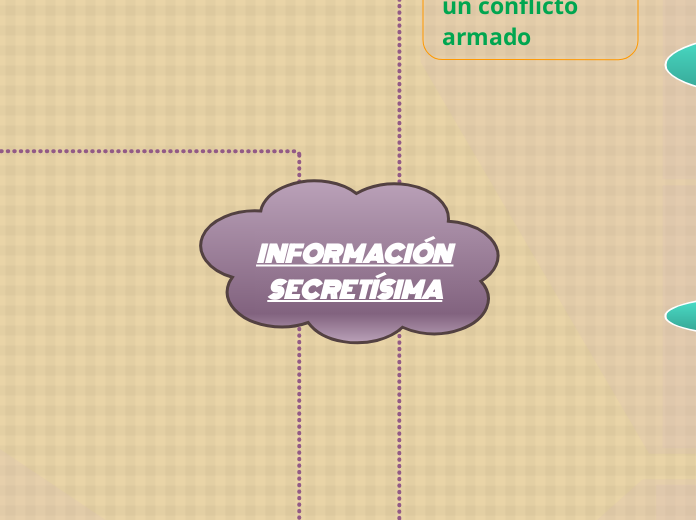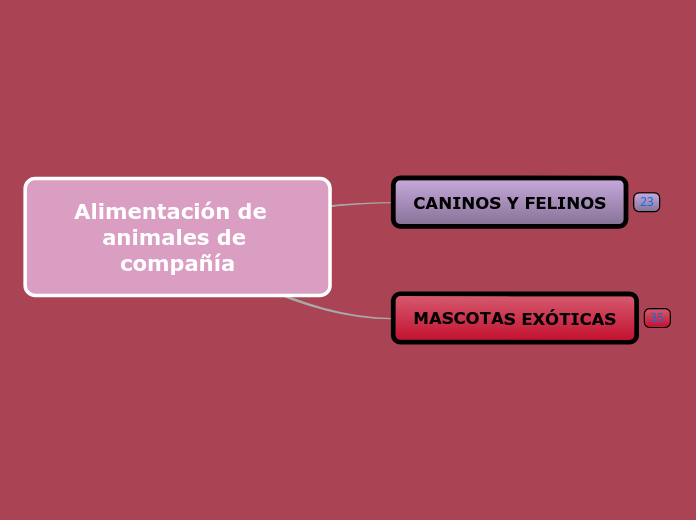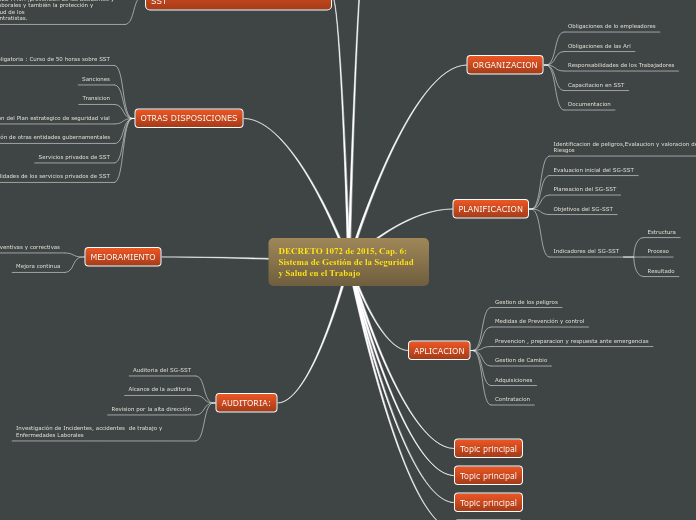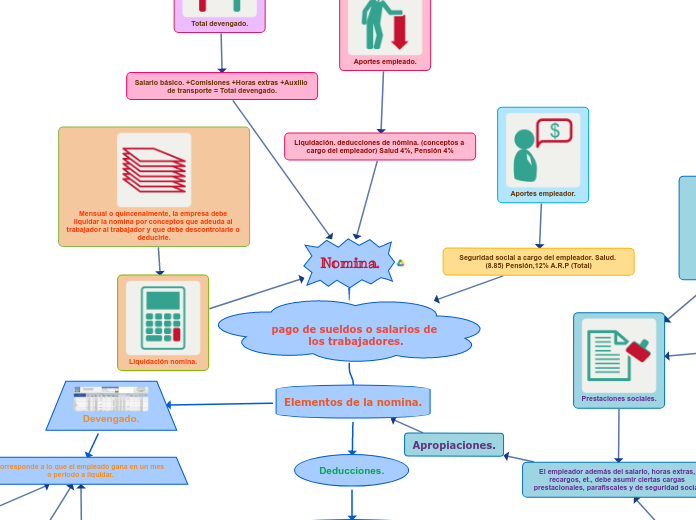INFORMACIÓN SECRETÍSIMA
Tenses demonstrate the time of actions centered around the subject of the sentence. These actions are called verbs and change according to tenses.
Afectar gravemente los intereses nacionales relacionados con seguridad
There are four Future tenses:
- Future Simple ('with Will' and 'with Going to')
- Future Continuous
- Future Perfect Simple
- Future Perfect Continuous
Art. 15 Baja documental
La baja de la documentación SECRETÍSIMA se realizará por:
Por haber perdido su vigencia:
6. Para la baja documental se llenará el formulario del "Anexo G".
5. Se realizara la respectiva acta de baja documental.
4. Pasado su tiempo de vigencia documento será dado de baja.
3. Con calificación SECRETÍSIMA 5 años, con calificación SECRETA 5 años más, y con calificación RESERVADA 5 años más).
2. Luego de que un documento haya cumplido su tiempo de vigencia como RESERVADO se procederá a valorarlos
1. Los documentos deberán primero cumplir su tiempo de vigencia.
Type in your own examples or you can also choose from the examples below.
Form of word "to be":
Will I be?Will you be?Will he/she/it be?Will we be?Will you be?Will they be?
Form of word "to have":
Will I have?Will you have?Will he/she/it have?Will we have?Will you have?Will they have?
Por causas de Emergencia
Cuando exista el abandono de un buque debido a un incendio o inundación a bordo.
Type in your own examples or you can also choose from the examples below.
Form of word "to be":
I will not beYou will not beHe/She/It will not beWe will not beYou will not beThey will not be
Form of word "to have":
I will not haveYou will not haveHe/She/It will not haveWe will not haveYou will not haveThey will not have
Reproducción
Future Simple is used:
- to predict an event in the future
- to invite
- to give orders
- to express willingness
- for actions that have not yet occurred but that will occur at a future date
El material SECRETISMO no puede ser reproducido.
La autoridad emisora hará conocer del particular a los organismos que recibieron inicialmente el documento.
Concederá o negará el pedido previo análisis de la "NECESIDAD DEL SABER".
Solicitará al organismo emisor
Art. 14.- Manejo y custodia
Future Continuous is used:
- for an action that is likely to happen in the future and continue for an expected length of time
- for an action that will be in progress at some point in the future
- for action verbs (e.g. running)
- for predictions about future events
Adverb used with Future Continuous:
- tomorrow (e.g. tomorrow at 5 o'clock)
En el manejo y custodia de este material, se cumplirán las siguientes disposiciones:
Future Simple with 'will'' is used:
- to predict the future
- for something with absolute certainty
- when we're talking about a decision at the moment of speaking
- promises, requests, refusals, offers
- future facts
Some adverbs used with Future Simple:
- tomorrow
- next week
- next month
- next year
-La entrega de la información SECRETÍSIMA, se realizará siempre con el recibo.
-Se entregará con inventario dicho material supervisado.
El oficial de seguridad de la documentación cumplirá las sigueintes actividades:
-Asesorar a su Comandante, sobre la correcta aplicación de las normas.
-Llevar un inventario de la información secretísima.
-Llevar un registro permanente.
-Verificar que el personal cuente con la calificación requerida para el manejo de este material.
-Lista actualizada de todas las personas que tienen acceso a la información secretísima.
-Recibir y mantener un registro de la información SECRETÍSIMA.
El ministro designará a un servidor de carrera en el archivo de gestión
Structure:
Will + Subject + V1(First Form of Verb)?
e.g. Will you see Mary when she comes back from Denmark?
El comandante nombrará un oficial de seguridad y un oficial en su reemplazo si este no está.
Structure:
Subject + Won’t (will not) + V1(First Form of Verb)
e.g. You won’t see Mary when she comes back from Denmark.
Los Comandantes de Repartos que hayan recibido una información SECRETÍSIMA, serán responsables de su manejo y custodia.
Structure:
Subject + Will + V1(First Form of Verb)
e.g. I will see Mary when she comes back from Denmark.
Comprometer los planes militares en vigencia
There are four Past tenses:
- Past Simple
- Past Continuous
- Past Perfect Simple
- Past Perfect Continuous
Art. 12.- Entrega de la información
Past Continuous is used for:
- an action that happened before another action in the past
- an action that started in the past and continued up to a given time in the past
- an action done several times up to a point in the past and continued to do after that point
- an action that happened in the past but is important at the time of reporting
Some adverbs used with Past Continuous:
- always, only, never, ever, still, just
d. Se deberá respetar la cadena de custodia para la entrega de documentos
c. En caso de estados de excepción por medios electrónicos seguros con los sistemas criptográficos aprobados por cada una de las Fuerzas.
Structure:
Was/ were + Verb-ING?
e.g. Were you studying when she called?
b. Por valija diplomática acompañada de un oficial de seguridad de documentos, cuando el material deba ser remitido al exterior del país
Structure:
Subject + wasn’t (was not)/ weren’t (were not) + Verb-ING
e.g. You were not studying when she called.
Examples
Type in your own examples or you can also choose from the examples below.
Form of word "to be":
I was not beingYou were not beingHe/She/It was not beingWe were not beingYou were not beingThey were not being
Form of word "to have":
I was not havingYou were not havingHe/She/It was not havingWe were not havingYou were not havingThey were not having
a. Por oficiales calificados del organismo que expida el documento
Structure:
Subject + was/ were + Verb-ING
e.g. You were studying when she called.
Art. 11.- Preparación para el envío
Past simple expresses:
- an action that happened in the past and has no connection with the present
- an action that happened once in the past
- an action that happened regularly in the past
- an action that was true for some time in the past
- an event or action that already occurred
- an action that is finite - has both a starting and a stopping point
Some adverbs used with Past Simple:
- yesterday
- last month, last year
- ago (e.g. two days ago)
- in (e.g. in 1997)
- never, always, seldom, often, frequently, occasionally, once, twice
g. Todo el material será cubierto y debidamente sellado para evitar su deterioro durante la manipulación
f. Los sobres o cubiertas interiores, serán sellados de modo que las marcas sean fácilmente identificadas
e. La escritura al destinatario se iniciará a 6 cm de los bordes izquierdo y superior.
d. El borde externo se sellará y se llenará conforme el art. que corresponda
c. La escritura al destinatario se iniciará a 5 cm del borde izquierdo y a 4cm del borde superior
Structure:
Did + subject + Base Form of the Verb?
e.g. Where did you meet her?
b. La clasificación SECRETÍSIMA, será colocada en la parte superior izquierda del sobre.
Structure:
Subject + did not/didn’t + Base Form of the Verb
e.g. They didn’t like my food.
a. El sobre interno, en el papel que se remitirá la comunicación, será cerrado con cinta adhesiva.
Structure:
Subject + Verb in Past Simple (2nd form)
e.g. They lived in Spain three years ago.
Origina un rompimiento de las relaciones diplomáticas, o un conflicto armado
There are four Present tenses:
- Present Simple
- Present Continuous
- Present Perfect
- Present Perfect Continuous
Art. 10.- Difusión
Present Perfect Continuous is used:
- to describe an action that started in the past and has continued up to the present
- to describe an action that has just finished
Some adverbs used with Present Perfect Continuous:
- always
- only
- never
- ever
- still
- just
f. Será difundido por escrito
Structure:
Subject + haven’t/hasn’t been + Verb-ING
e.g. She hasn’t been playing tennis for a long time.
e. Prohibido ser comentado en presencia del personal no autorizado
d. La información con calificación SECRETÍSIMA no será entregada a otras entidades militatares.
c. La "necesidad del saber" determinará con mayor restricción en áreas peligrosas
b. Para difundir esta información el Director determinará la "necesidad del saber"
a. Se efectuará en coordinación con el M.D.N. conocimiento al Jefe Comando Conjunto y autorización del Consejo de Seguridad Pública del Estado
Structure:
Subject + have/ has been + Verb-ING
e.g. They have been learning French for two years.
Procedimiento de calificación
Present Perfect is used for:
- an action that occurred at a time which is indefinite and has its effect on the subject
- an action that occurred many times and has the possibility to occur in the present/future
- an action that began in the past and is still going on in the present
Some adverbs used with Present Perfect:
- just
- already
- yet
- for
- never/ever
- up to now
e. La marcación de un documento digital SECRETÍSIMO, constará en la parte central superior e inferior de cada hoja
La clasificación de SECRETÍSIMA, en color rojo y con letras de mayor tamaño
d. llevarán una marcación numérica que corresponde al orden cronológico de expedición de color azul.
c. Los números colocados en la parte superior derecha, corresponderán: el Nº.1 al original
b. En la parte central superior e inferior de cada hoja, constará la clasificación de SECRETÍSIMA.
Structure:
Subject + haven’t (have not)/ hasn’t (has not) + Past Participle
e.g. She hasn’t finished the letter.
a. La cubierta será de color amarillo.
Structure:
Subject + have/ has + Past Participle (3rd Form of the Verb)
e.g. She has finished the letter.
Art. 8.- Elaboración
Present Continuous is used to indicate the ongoing time (now).
Some adverbs used with Present Continuous:
- now, right now
- at this moment
- at the moment
- continually
- perpetually
- this year
- this season
- forever
e. Prohibido, al personal que interviene en la elaboración del documento SECRETISMO, generar y mantener archivos digitales
d. Los sistemas informáticos donde se aloje la información clasificada deberán cumplir con los parámetros de seguridad establecidos en los centros de tecnología.
c. Los materiales de apoyo tales como: borradores, notas, grabaciones, impresiones, archivos magnéticos, cintas de máquina, papel carbón, matrices, notas taquigráficas, placas, películas y elementos similares, utilizados para la elaboración de la información SECRETÍSIMA, deberán ser protegidos por el Oficial de Seguridad de Documentos,
Structure:
BE + Subject + Verb-ING?
Are you eating now?
Procederá a su destrucción dejando constancia en una acta
Type in your own examples or you can also choose from the examples below.
Form of word "to be":
Am I being?Are you being?Is he/she/it being?Are we being?Are you being?Are they being?
Form of word "to have":
Am I having?Are you having?Is he/she/it having?Are we having?Are you having?Are they having?
b. El proceso de elaboración es responsabilidad de la autoridad emisora.
Structure:
Subject + BE not + Verb-ING
e.g. You are not eating now.
a. Intervendrán las personas que hubieren sido calificadas
Structure:
Subject + BE (am/is/are) + Verb-ING
e.g. You are eating now.
Implosión de la clasificación
Present Simple is used for:
- habits
- general truths
- repeated actions of events
- fixed arrangements/timetables
- feelings/opinions/beliefs
- instructions.
Some adverbs used with Present Simple:
- always
- usually
- seldom
- never
- sometimes
- often
- frequently, generally
- habitually, occasionally
- once, twice
Se entenderá que esta información se encuentra ya motivada.
Structure:
Do + Subject (I, You, We, They)+ V1 (First Form of Verb)?
Does + Subject (He, She, It)+V1 (First Form of Verb)?
e.g. Where does he work?
Descalificación quince años
Type in your own examples or choose from the examples below.
Form of word "to be":
Am I?Are youIs he/she/it?Are we?Are you?Are they?
Form of word "to have":
Have I?Have youHas he/she/it?Have we?Have youHave they?
b. Contendrá las características de la reserva estipuladas en el artículo 28 del Reglamento a la Ley de la Seguridad Pública y del Estado
Structure:
Subject (I, You, We, They) + do not / don’t + V1 (First Form of Verb)
Subject (He, She, It) + does not / doesn’t + V1 (First Form of Verb)
e.g. He doesn’t work in a bank.
a. M.D.N y las autoridades militares están facultadas para imponer la clasificación de SECRETÍSIMO
Structure:
Subject (I, You, We, They) + V1(First Form of Verb)
e.g. I usually go jogging at weekends.
Subject (He, She, It)+ V1(First Form of Verb) + s/es
e.g. She writes every day.









